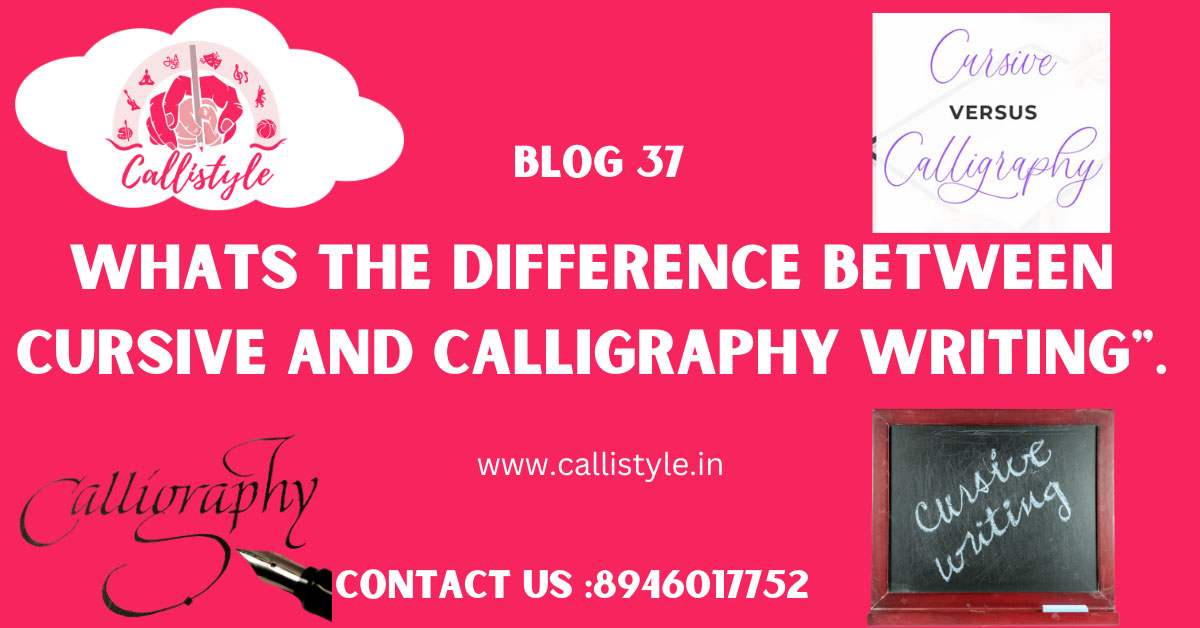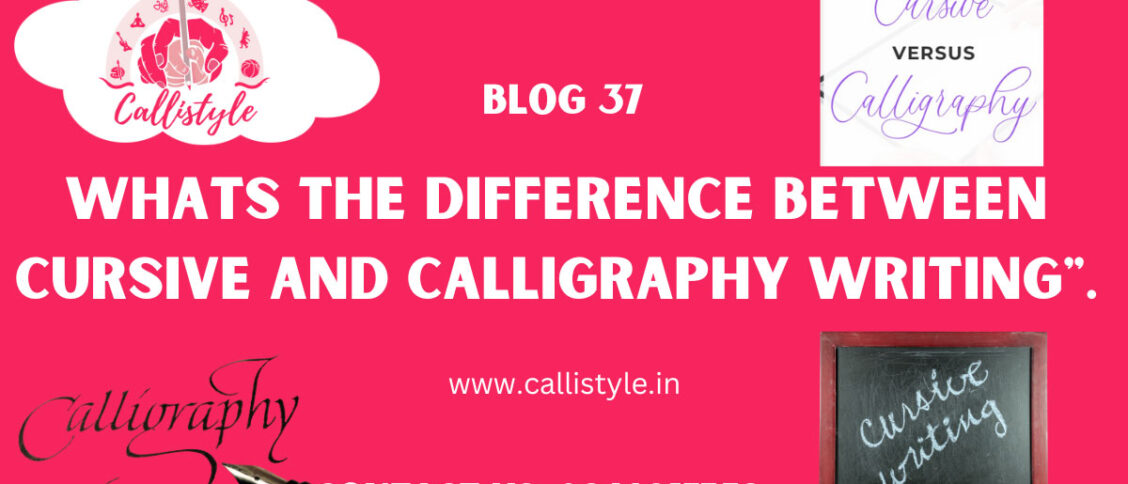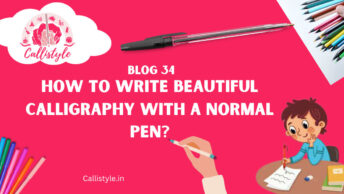The Art of Handwriting: Understanding the Difference Between Cursive and Calligraphy
Understanding the Difference Between Cursive and Calligraphy
If you ever find yourself staring a little too long at a handwritten letter or sign, you’re not alone. In today’s digital world, the art of handwriting can feel like a relic of the past. Yet a beautifully scripted work of writing still has the power to stop us in our tracks.
Understanding the difference Between cursive and calligraphy: Cursive is a type of writing that most people learned in school. The purpose is to write quickly and legibly so that you don’t have to lift your pen off the page, resulting in letters that are connected. Calligraphy involves drawing out the letters using specific strokes. The purpose is to create beautiful writing.
But what exactly are we looking at? Is it cursive or calligraphy? While the two share similarities, there are important differences between cursive handwriting and the art of calligraphy.

A Brief History of Cursive
First, let’s start with cursive. Chances are you learned this style of handwriting in grade school. Sometimes referred to as “longhand,” cursive is a style of penmanship where letters within a word connect together in a flowing pattern.
Cursive emerged as a faster way to write by hand. No need to lift the pen between each letter! This made cursive the preferred style for everything from letters to ledgers. Young schoolchildren practiced their cursive letters – commonly known as “cursive handwriting worksheets” today. Mastery of neat cursive penmanship used to be a point of pride and a practical necessity.
Of course, the rise of the keyboard changed all that. Today, many schools no longer teach cursive, considering it outdated in the digital age. But whether you love it or hate it, cursive remains the recognizable style of handwriting most of us were taught.
The Flourishing Art of Calligraphy
Calligraphy, on the other hand, has a very different backstory. Rather than efficiency, calligraphy values artistry and design.
The word “calligraphy” comes from Greek and literally means “beautiful writing.” Unlike cursive that aims to connect letters, calligraphy pays attention to the negative space between letters, works of art in their own right. Great calligraphy also utilizes variation in line width, unique fonts, and creative flourishes.
Modern calligraphy can be traced back to the development of the broad nib pen. Calligraphy masters throughout history used these pens to showcase their skill through thick and thin strokes.apoint
Today, calligraphy remains a popular art form for stationery, event invitations, maps, and signage. It can be seen in marketing materials, book covers, certificates, wedding decor, and more. Far from outdated, calligraphy adds an elegant and artistic touch.
Key Differences Between Cursive and Calligraphy
Now that we’ve outlined a brief history, what are the key differences between these two styles of handwriting?
Purpose
Cursive: Created for quick, efficient communication and documenting information by hand. Not typically considered an art form.
Calligraphy was Created primarily for artistic expression and aesthetics. Valued as an art form in itself.
Style
Cursive: Has a uniform, consistent style across letters. Aims to connect letters with efficiency.
Calligraphy: Creative flourishes and stylistic variation between letters and words. Experimentation with different fonts and styles.
Form vs. Function
Cursive: Prioritizes form and function over creative expression. Focus is communicating information through efficient handwriting.
Calligraphy: Artistic form is the primary focus and function. Calligraphy is appreciated as an art form above efficient communication.
Tools
Cursive: Can be written with everyday writing tools like ballpoint pens, pencils.
Calligraphy: Typically created with specialized tools like calligraphy pen and ink. Allows for variation in stroke width.
Complexity
Cursive: Composed of fairly simple, repetitive letter forms. Easier for everyday writers to master.
Calligraphy: Diverse letter forms requiring practice to master. Intricate techniques like flourishing.
Teaching Method
Cursive: Traditionally taught systematically in schools at a young age.
Calligraphy: Requires dedicated study and practice over many years to master. Often self-taught or learned under a master.
While not exhaustive, these points help capture the spirit of each style. In summary: cursive values communication efficiency while calligraphy values creative expression.
Appreciating the Art of Handwriting
In our modern world, handwriting may seem relegated to the past. But on your next stroll, keep an eye out for great penmanship.
Both cursive and calligraphy connect us to the artists behind the letters. They add personality, creativity, and human craftsmanship to the printed word.
So next time you spot some fancy script, take a closer look. Is it tidy cursive reflecting a bygone era or modern calligraphy elevating handwriting to an art form? Either way, the art of handwriting continues to grace our everyday lives with beauty and inspiration.
Why Callistyle?
Callistyle is an ed-tech company that makes you fall in love with learning regardless of age, Callistyle can help you enhance your creativity and cognition with our Extracurricular creative courses. Learn the cursive handwriting course and handwriting improvement course from Callistyle.
With mentors who have over seven years plus experience, a unique teaching methodology, and satisfaction guaranteed, Callistyle is where you should consider joining.
- Free Demo class.
- Certificate provided.
- Individual attention provided.
- Only two students in one batch.
- Flexible class schedule & timing.
- 12×7 doubts clarified
- Best results guaranteed!
- Flexible payment method.
- 7 years plus experienced Trainers.
- Assistance is provided post-course completion also.
Register for a Free Demo Class now!








